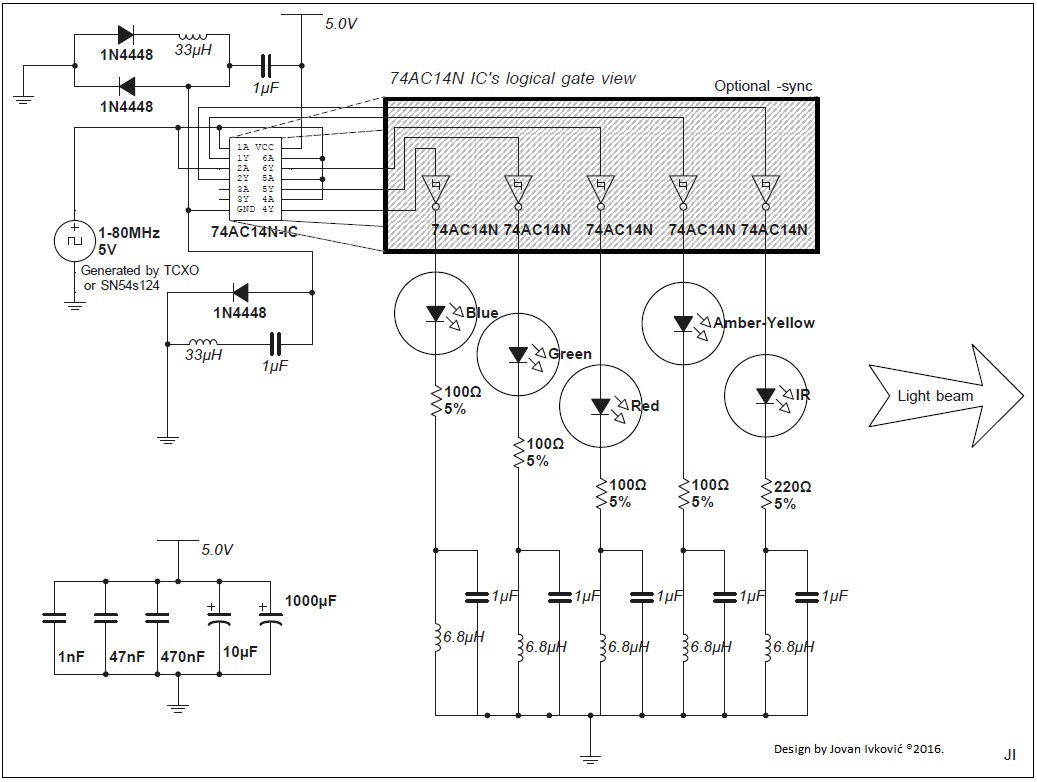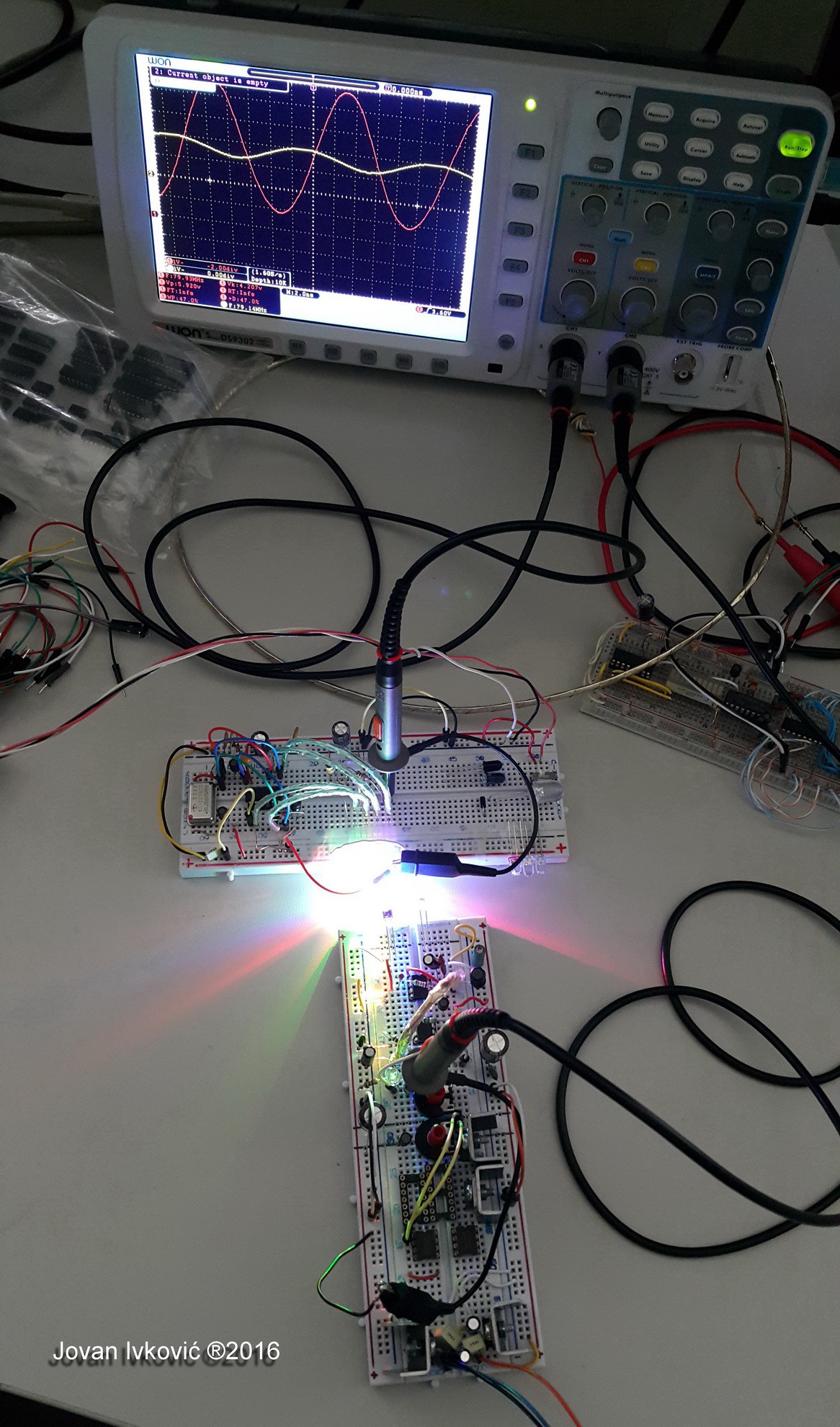-
1Step 1
In fist and second paper you will find electronic design of key elements like transceiver and receiver part.
-
2Step 2
To find optimal speed of LED pulse transmission that depend on your setup and used component I suggest you first build simple but fast and effective LED driver.
I suggest this design, and as you already read from presented papers I tested under real work conditions more then 10 different TTL/CMOS circuits until I find optimal solution that preserve speed and signal integrity while providing enough power to several LED's.
![]()
As you read from 2nd paper this design can be improved by reducing number of LED's per one IC and lowering resistor values in according to theirs Vf. Any way playing with this design will help you start and understand.
Parallel coupling of ports as people on Ronja project dose, can help you increase If current but at expense of drawing more then 1W for the whole setup that we try to preserve. On the other hand use of ultra-fast MOSFET Drivers like Microchip's TC4427 (max drive up to 1.5A) shows as excellent solution only for low speed < 5-8MHz solution for full power IR emitter. Observed delays of 25-40...60ns choke signal geometry above 10MHz. Keep in mind that 100-200...500mA pulse with few volts of Vf can produce serious ringing and signal degradation in circuit while it exceed 1W limit.
Any way this solution can drive you up to 80MHz.
![]()
Visible Light Communication for the masses
This project will focus on making current research in field of Visible Light Communication (VLC and LiFi) usable and meaningful for use...
 Jovan
Jovan

Discussions
Become a Hackaday.io Member
Create an account to leave a comment. Already have an account? Log In.
As you can see from presented instructions used parts can give us optical pulse up to 80MHz. What last picture is showing is how LED diode (average of 4 different) lose signal level with rise of frequency. This is also very good and known fact that every LED have specific Power and Bandwidth product so that increasing of working frequency decrease maximal emitted light power .
For example LED at 2MHz (50% duty) can do full swing from 0 to 100% nominal optical power, but with rise of frequency for example to 20MHz it can swing from 0 to 30% and back, at the end it can transfer even 100MHz but swing will be very low in mV range.
Any way by multiplying number of the same LED's (cluster) and with help of optical lens focusing (amplifying) can improve that lose.
Are you sure? yes | no